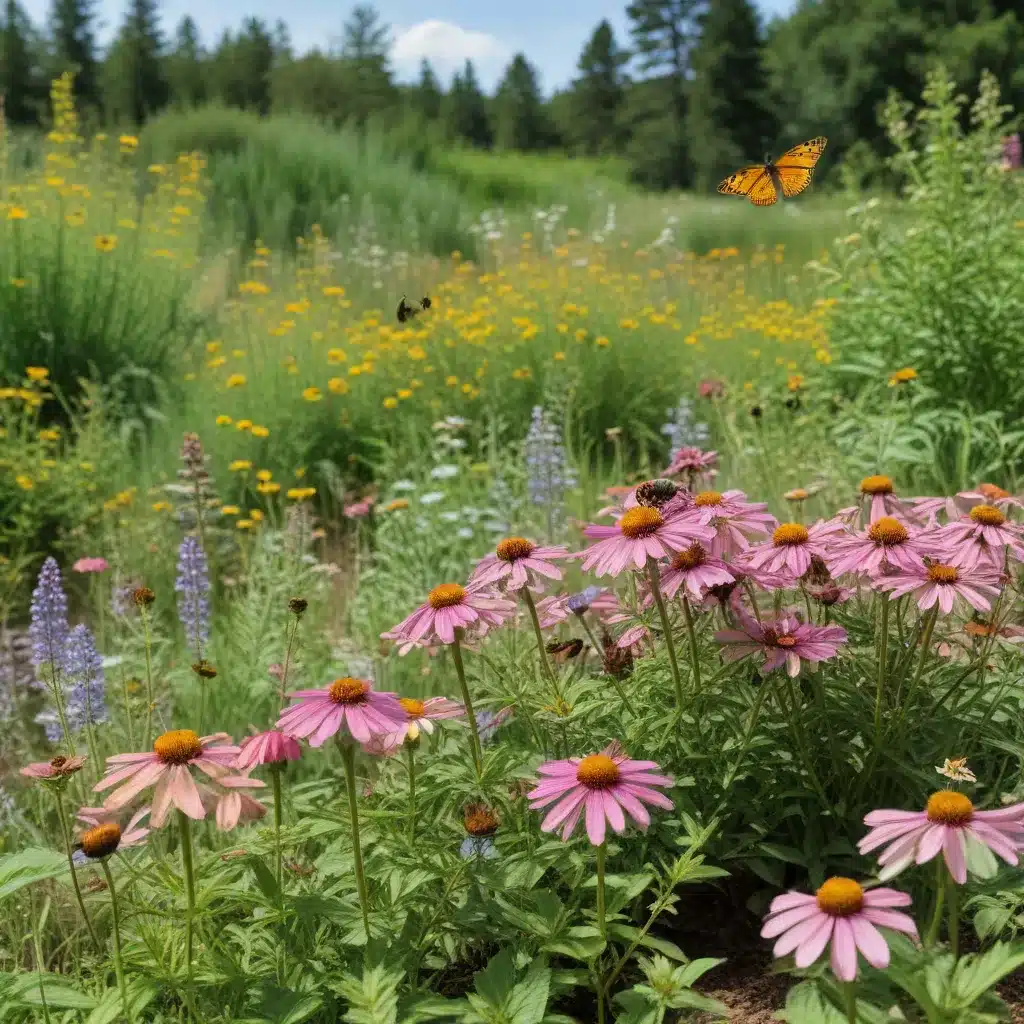
Pollinator-Friendly Paradises: Creating Landscapes that Support Essential Insect Life
As tree care specialists at TriCounty Tree Care, we recognize the vital role that pollinators play in the health and resilience of our local ecosystems. Pollinators — a diverse array of insects, birds, and mammals — are the unsung heroes responsible for the reproduction of over 75% of the world’s flowering plants and an astonishing 35% of global food crops. From buzzing bees to fluttering butterflies, these industrious creatures are the great connectors that sustain the lush green tapestry upon which all life depends.
Importance of Pollinators
Ecological Role of Pollinators: Pollinators are the keystone species of terrestrial food webs, transferring pollen from flower to flower and enabling the production of fruits and seeds that nourish countless other organisms. They recycle organic matter, control pests, and maintain soil fertility — essential “ecosystem services” that are often overlooked yet fundamental to the proper functioning of natural and managed landscapes alike.
Economic Impact of Pollinator Decline: The value of pollinator-dependent crops is estimated at over $200 billion globally per year. However, many pollinator populations are in alarming decline, jeopardizing agricultural productivity, biodiversity, and the overall resilience of ecosystems. Factors like habitat loss, pesticide use, climate change, and disease are all contributing to the so-called “insect apocalypse” unfolding worldwide.
Native Pollinator Species
Bee Species: The United States is home to over 3,600 species of native bees, ranging from the familiar European honeybee to the diminutive mining bee. These industrious pollinators exhibit a dazzling array of sizes, shapes, and behaviors, each uniquely adapted to specific plant communities. Sadly, many native bee populations are struggling, with some species already facing extinction.
Butterfly and Moth Species: Vibrant butterflies and their nocturnal counterparts, moths, are equally vital to pollination networks. From the iconic monarch to the diminutive blue butterfly, these winged wonders not only delight the senses but also play critical roles in ecosystem function. Unfortunately, habitat loss and pesticide use have devastated many butterfly and moth populations in recent decades.
Pollinator-Friendly Plant Selection
Native Plant Species: To support the diverse needs of local pollinators, it is essential to incorporate native plants into our landscapes. These species have evolved in tandem with regional insect communities, providing them with the specific nectar, pollen, and nesting resources they require. By choosing native plants over ornamental cultivars, we can create verdant sanctuaries that sustain pollinators and other wildlife.
Nectar-Rich Plants: Pollinators are drawn to a variety of flower shapes, colors, and sizes, but they universally seek out nectar-rich blooms as a source of energy. When designing a pollinator-friendly garden, focus on including a succession of plants that offer nectar from early spring through late fall, ensuring a continuous food supply.
Seasonally Blooming Plants: In addition to nectar, pollinators rely on pollen as a protein-rich food source for their young. Aim to incorporate a diverse palette of plants that flower at different times of the year, catering to the varied nutritional needs of pollinators throughout their life cycles.
Habitat Considerations
Nesting Sites: Many native bees and other pollinators require specific nesting habitats, such as bare ground, hollow plant stems, or small cavities. Leaving areas of undisturbed soil, retaining dead wood, and avoiding overzealous pruning can provide the crucial shelter these creatures need to thrive.
Shelter and Overwintering: Pollinators also require protected spaces to shelter from the elements and safely overwinter. Leaving leaf litter, fallen branches, and other organic debris on the ground can create vital microhabitats for a wide range of beneficial insects.
Water Sources: Access to clean water is essential for pollinators. Incorporate shallow bird baths, puddling areas, or even a simple saucer filled with stones and water to provide a reliable hydration source.
Garden Design Principles
Diversity and Density of Plantings: When designing a pollinator-friendly landscape, aim for a rich tapestry of native plants in varying heights, bloom times, and growth habits. Clustering similar species in dense drifts, rather than scattering them throughout the garden, can create visual impact and make it easier for pollinators to locate and access their preferred resources.
Pesticide-Free Maintenance: Avoid the use of pesticides, herbicides, and other synthetic chemicals, as these can have devastating effects on pollinator populations. Instead, embrace an integrated pest management approach that emphasizes cultural, biological, and mechanical controls to maintain the health and balance of your garden.
Minimizing Disturbance: Pollinators thrive in landscapes that provide a degree of undisturbed habitat. Reduce the frequency and intensity of mowing, leaf blowing, and other disruptive maintenance practices to create refuges for these vital creatures.
Urban Pollinator Habitats
Community Gardens: Even in densely populated urban areas, community gardens can serve as vibrant pollinator oases. By incorporating native plants, providing nesting sites, and adopting sustainable gardening practices, these shared green spaces can become vital hubs for local insect biodiversity.
Green Roofs and Vertical Gardens: Innovative approaches to urban landscaping, such as green roofs and vertical gardens, can also contribute to the creation of pollinator-friendly habitats. These elevated landscapes offer unique opportunities to integrate diverse, nectar-rich plantings that support a range of pollinator species.
Parkland and Public Spaces: Public parks, nature preserves, and other green infrastructure within cities and towns can be carefully managed to promote pollinator health. By planting native flora, reducing pesticide use, and maintaining natural areas, these shared spaces can become vital sanctuaries for bees, butterflies, and other essential pollinators.
At TriCounty Tree Care, we believe that by cultivating pollinator-friendly paradises in our landscapes, we can not only beautify our surroundings but also play a vital role in safeguarding the long-term health and resilience of our local ecosystems. Through informed plant selection, mindful garden design, and responsible maintenance practices, we can all contribute to the creation of vibrant, biodiverse habitats that sustain the pollinators upon which we all depend.


